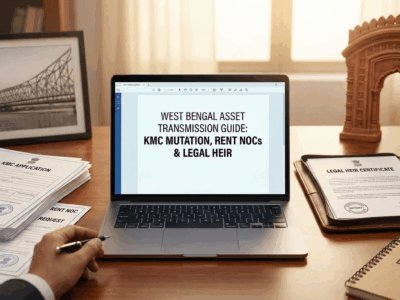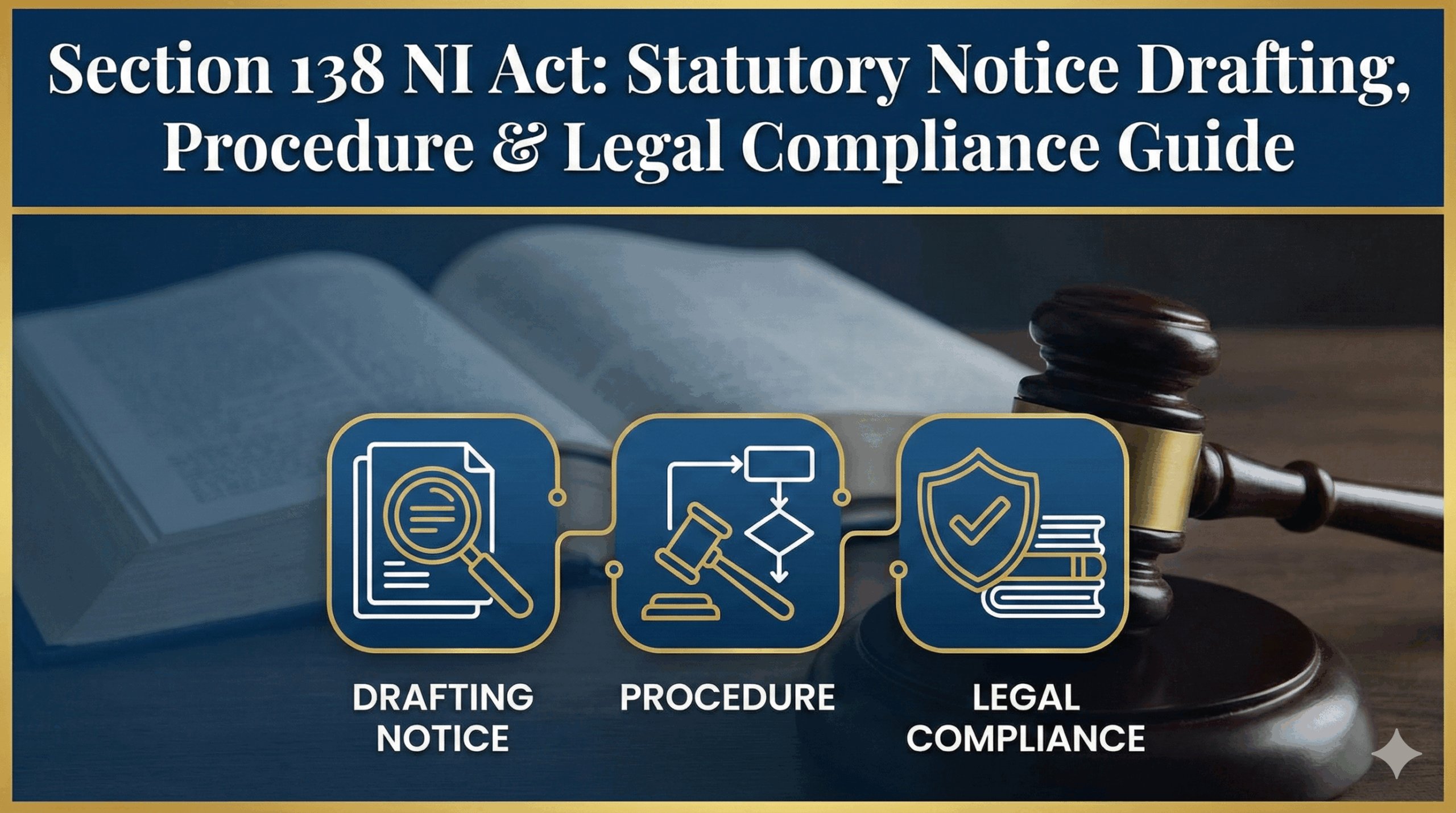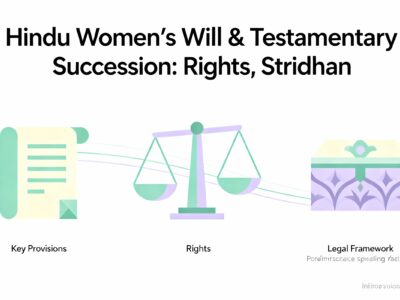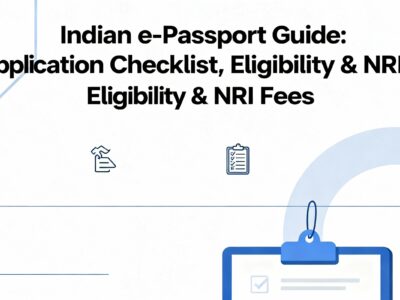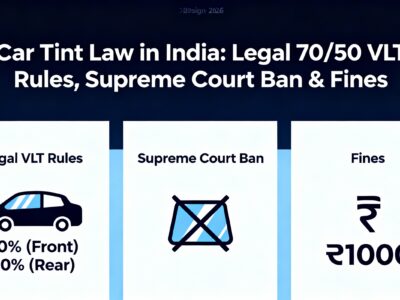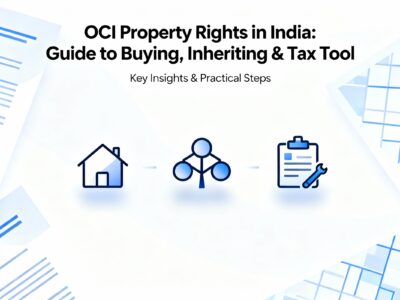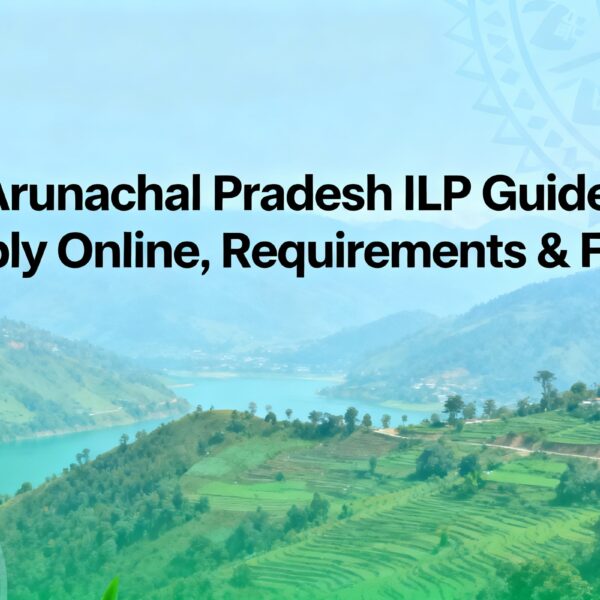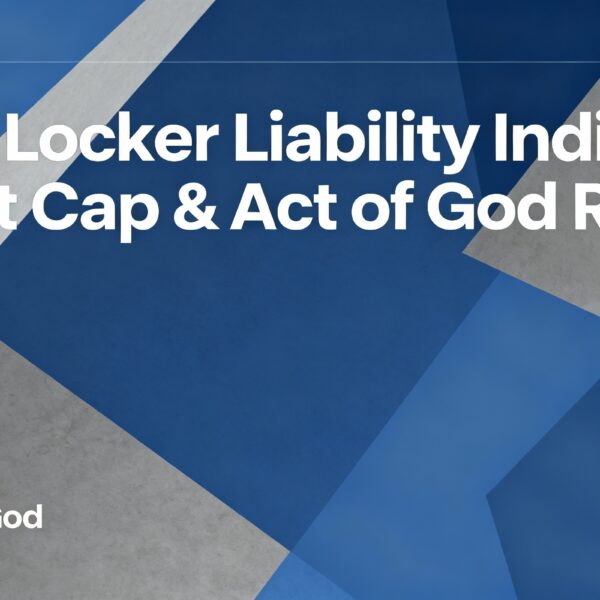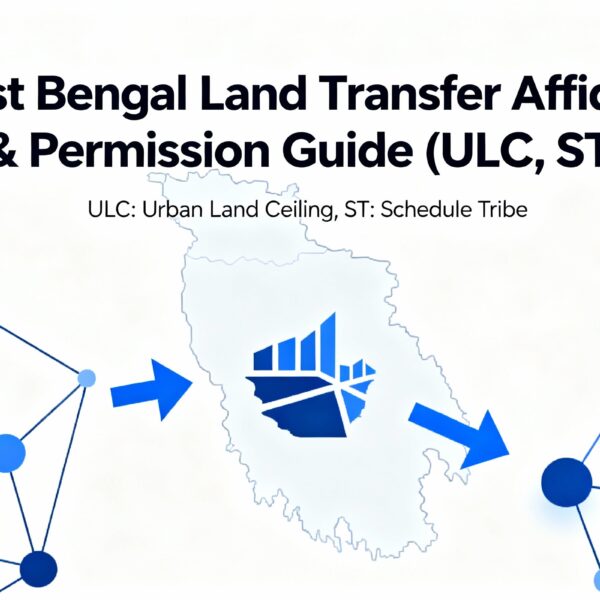Buying a home in West Bengal under the Pradhan Mantri Awas Yojana (PMAY) is a dream for many, but navigating the complexities of stamp duty, registration fees, and legal paperwork can be daunting. The post-pandemic financial landscape has shifted, and understanding the current stamp duty rates—distinct from the previous rebate regime—is crucial for accurate budgeting. This comprehensive guide, brought to you by Evaakil.com, breaks down every aspect of your property purchase in Kolkata and beyond. From calculating the precise stamp duty and registration charges with our interactive tool to demystifying circle rates and leveraging home loan tax benefits, we provide the clarity you need for a confident and legally sound investment.
Navigating property charges in Kolkata after the 2% rebate? We've got you covered. Get updated rates, use our interactive calculator, and understand the complete process for your PMAY home purchase.
Get a real-time estimate of all government charges for your new property. Enter the property value and select your location to begin. ₹0 ₹0 ₹0 This is an estimate. Final charges are determined by the Sub-Registrar's Office. Rates updated as of Sep 2025. Navigating the property registration process can seem complex. We've broken it down into five clear, manageable steps from payment to final collection. Calculate and pay your exact Stamp Duty and Registration Fee online through the GRIPS portal. Download and print the e-Challan as proof of payment. Gather all required documents as per our checklist. This includes the Sale Deed, ID proofs, PAN cards, and the payment e-Challan. Book an appointment online for the Sub-Registrar's Office (SRO) with jurisdiction over your property. Ensure both buyer, seller, and witnesses are available. At the SRO, all parties will have their photographs and fingerprints taken. The Sale Deed is then formally executed in front of the Sub-Registrar. After processing (typically a few weeks), you can collect the original, registered Sale Deed. This is your final proof of ownership. Stamp duty isn't paid on your sale price, but on the official market value. Understanding this is key to an accurate calculation. The Circle Rate (or IGR Rate in West Bengal) is the minimum value at which a property can be registered. It's set by the government based on location, property type, and amenities. You must pay stamp duty on the higher of your agreement value or the calculated circle rate value. Market Value = Built-up Area (sq. m.) x Applicable Circle Rate (₹ per sq. m.) The West Bengal Directorate of Registration and Stamp Revenue maintains an online calculator. You can input your property's specific details (Mouza, road, etc.) to find the precise, official circle rate. Always use this official source for your calculations. These are the standard, post-rebate rates applicable from April 2024 onwards. The 2% stamp duty rebate has been discontinued. The temporary 2% stamp duty rebate offered post-COVID was a significant saving. Here’s a clear comparison of how much more a homebuyer pays under the current, standard rates. Don't fall for common misconceptions. Here are the facts about PMAY-related charges in West Bengal. Unlike some other states, West Bengal **does not offer any special stamp duty rebate for women homebuyers.** The PMAY mandate for female ownership is a condition to get the central government's loan subsidy; it does not reduce your state-level tax liability. The rates are the same for all genders. You might see a 'Force Majeure' (Act of God) clause in your sale agreement. This is a critical legal protection for the developer. It allows the builder to delay property possession without penalty due to unforeseen, uncontrollable events like natural disasters, government-enforced lockdowns, wars, or epidemics. It is crucial to read this clause carefully to understand what events are covered and what the notification procedure is if the clause is invoked. Having these documents ready will ensure a smooth and hassle-free registration process at the Sub-Registrar's Office (SRO). Stamp duty and registration fees are not just procedural hurdles; they are a major source of revenue that funds state development projects. The revenue collected from these charges is a vital component of the state's non-tax revenue. These funds are channeled back into the economy to finance infrastructure projects like roads, public transport, healthcare, and education. A buoyant real estate market directly contributes to the state's ability to fund these essential public services. The core of PMAY is the Credit Linked Subsidy Scheme (CLSS). This is an interest subsidy paid upfront to your lender, reducing your total loan principal. Economically Weaker Section Low Income Group Middle Income Group I Middle Income Group II A smooth registration experience is possible if you avoid these common errors. The name on the Sale Deed must EXACTLY match the name on the PAN and Aadhaar cards, including initials and spacing. Any discrepancy can lead to rejection. Paying stamp duty on the agreement value when the circle rate is higher is a frequent mistake. Always calculate and pay on the higher of the two values to avoid penalties. The Sale Deed requires two witnesses, who must be present at the SRO with their original ID proofs and photographs. Forgetting this can halt the entire process. Once the Sale Deed is registered, you have a few more critical tasks to secure your ownership legally and practically. Understanding the language of property law is crucial. Here are some common terms demystified. The primary legal document that acts as proof of sale and transfer of property ownership from the seller to the buyer. A certificate that proves a property is free from any legal or monetary liabilities (like an existing mortgage). The process of changing the title ownership of a property from one person to another in the records of the local municipal body. An alternative to e-stamping where an authorized bank or agent uses a machine to affix a stamp on the document, indicating the duty has been paid. Beyond the main sale deed, if you take a home loan, you must also pay stamp duty on the loan agreement, known as the Memorandum of Deposit of Title Deed (MODT). This is a mandatory charge that legally secures the bank's interest in your property. The stamp duty for MODT is calculated on the home loan amount, not the property value. Stamp Duty on MODT = 0.5% of the Loan Amount (Max. ₹50,000) For example, on a loan of ₹40 Lakh, the MODT stamp duty would be ₹20,000. It's a crucial expense to factor into your final budget. A home loan is a significant financial commitment, but it also offers substantial tax benefits under the Income Tax Act, 1961. [Image of tax savings infographic with piggy bank] Under Section 24(b) You can claim a deduction on the interest portion of your home loan EMI. This is one of the most significant benefits of having a home loan. Maximum Deduction ₹2,00,000 per financial year Under Section 80C The principal amount you repay on your home loan is eligible for deduction. This is part of the overall 80C limit, which also includes other investments like PPF, EPF, and ELSS. Maximum Deduction (Combined Limit) ₹1,50,000 per financial year Under Section 80EEA, first-time homebuyers could claim an additional deduction of up to ₹1.5 Lakh on interest payments, subject to certain conditions. While this was for loans sanctioned up to March 31, 2022, always check for new government schemes that may offer similar benefits. There's no single form to "claim" PMAY. Instead, you apply for the Credit Linked Subsidy Scheme (CLSS) through your bank or housing finance company. Follow this procedural template. First, confirm you meet the PMAY criteria (income, no prior pucca house). Then, approach a registered Primary Lending Institution (PLI)—this can be any major bank or Housing Finance Company (HFC)—to apply for a home loan. Inform the lender that you wish to apply for the PMAY-CLSS subsidy. They will provide you with an application form, which is typically integrated with their home loan application. You must provide your Aadhaar number and a self-declaration of your income and property status. The lender will process your home loan application and simultaneously verify your PMAY eligibility based on the documents and declaration you provide. Once your loan is sanctioned, your PMAY application moves to the next stage. After sanctioning your loan, the lender uploads your details to the portal of a Central Nodal Agency (CNA) like the National Housing Bank (NHB) or HUDCO for final approval and subsidy release. Once the CNA approves your application, the subsidy amount is paid directly to your lender. The lender then credits this amount to your home loan account. This reduces your total principal outstanding, which in turn lowers your monthly EMI. The Aadhaar number is mandatory for all applicants in a household to avail the PMAY subsidy. The government uses it to prevent duplication and ensure that the benefit reaches only eligible first-time homebuyers. While it may seem like an extra cost, hiring a property lawyer is an investment in security and peace of mind. A lawyer's expertise goes far beyond just drafting documents. A lawyer will conduct a thorough title search, examining decades of property records to ensure the title is clear, marketable, and free from disputes. They will analyze the Builder-Buyer Agreement or Sale Deed, identifying any unfair, one-sided, or ambiguous clauses that could harm your interests. They ensure all paperwork complies with RERA (Real Estate Regulation and Development Act) and other state-specific regulations. A lawyer can guide you through the complexities of the registration process, preventing common errors that cause delays and rejections. The 'City of Joy' is witnessing rapid infrastructure growth, creating new real estate hotspots and boosting the value of existing ones. Here are the key growth corridors to watch. With its IT hubs, planned infrastructure, and the upcoming Airport-New Garia metro line, this area remains the epicenter of new residential and commercial development. Areas like Garia, Narendrapur, and Sonarpur are seeing a surge in affordable and mid-segment housing projects, thanks to improved connectivity and social infrastructure. Luxury and premium projects are transforming the stretch from Howrah to Uttarpara, capitalizing on scenic views and improved ferry services for a unique lifestyle offering. To ensure a smooth property buying journey, keep these key points in mind. They are your final checklist for success. Always factor in an additional 8-10% of the property value for ancillary costs like stamp duty, registration fees, legal consultation, and potential MODT charges. This prevents financial surprises later. Before signing any document, independently verify the property's circle rate on the official government portal. Cross-check all documents for consistency and accuracy, especially names and property details. This is the most critical step. A qualified lawyer from a reputable firm like Evaakil.com will conduct thorough due diligence, vet your Sale Deed, and guide you through the legal maze, safeguarding your lifelong investment.
Stamp Duty & Registration
Simplified for 2025
Instant Cost Estimator
Enter Property Details
Total Estimated Cost
The Registration Process: A Step-by-Step Flow
e-Payment of Duties
Prepare Final Documents
Book SRO Appointment
Biometrics & Execution
Collect Registered Deed
Calculating Your Property's Market Value (Circle Rate)
What is the Circle Rate?
Find Your Official Rate
West Bengal Stamp Duty & Registration Rates 2025
Property Value
Location
Stamp Duty
Registration Fee
Total Payable
Up to ₹25 Lakh
Urban (Corporation/Municipality)
5%
1%
6%
Rural (Panchayat)
4%
1%
5%
Above ₹25 Lakh
Urban (Corporation/Municipality)
6%
1%
7%
Rural (Panchayat)
5%
1%
6%
Old Rebate vs. Current Rates: A Cost Impact Analysis
Metric
Old Rebate Regime (Expired)
Current Standard Regime (2025)
Stamp Duty (Urban)
4%
6%
Registration Fee
1%
1%
Total Payout
5%
7%
Example on ₹25 Lakh Property
(Urban Location)
₹1,25,000
₹1,75,000
(₹50,000 more)
PMAY Myth Busters
MYTH: PMAY beneficiaries get a discount on stamp duty.
MYTH: Women homebuyers pay lower stamp duty.
FACT: This is false in West Bengal.
Legal Eagle: Understanding 'Force Majeure' in Your Deed
Essential Document Checklist
For Buyer & Seller
Property Documents
For Witnesses (Two Required)
Proof of Payment
Economic Impact: Stamp Duty as a Key Revenue Source
Fueling West Bengal's Growth
PMAY Subsidy Deep Dive: Understanding the CLSS Benefit
EWS
LIG
MIG-I
MIG-II
Common Pitfalls & How to Avoid Them
Mismatch in Names
Incorrect Property Valuation
Missing Witness Signatures
Post-Registration: Your Work Isn't Done Yet!
Glossary of Key Terms
Deed of Conveyance (Sale Deed)
Encumbrance Certificate (EC)
Mutation
Franking
The Hidden Cost: Stamp Duty on Loan Agreements (MODT)
How is it calculated in West Bengal?
Maximize Your Savings: Tax Benefits on Home Loans
Deduction on Interest Paid
Deduction on Principal Repayment
First-Time Homebuyer?
How to Claim Your PMAY Subsidy: A Step-by-Step Template
Check Eligibility & Approach a Lender
Fill Out the PMAY Application
Lender's Due Diligence
Claim Uploaded to Central Nodal Agency
Subsidy Credited to Loan Account
Mandatory Document: Aadhaar
The Evaakil Advantage: Why a Legal Expert is Non-Negotiable
In-Depth Due Diligence
Contract Scrutiny
Legal Compliance
Smooth Registration
Kolkata's Real Estate Horizon: What's Next?
New Town & Rajarhat
EM Bypass South
Hooghly Riverfront
Final Recommendations
1. Budget Beyond the Sale Price
2. Verify, Then Trust
3. Engage Professional Legal Counsel
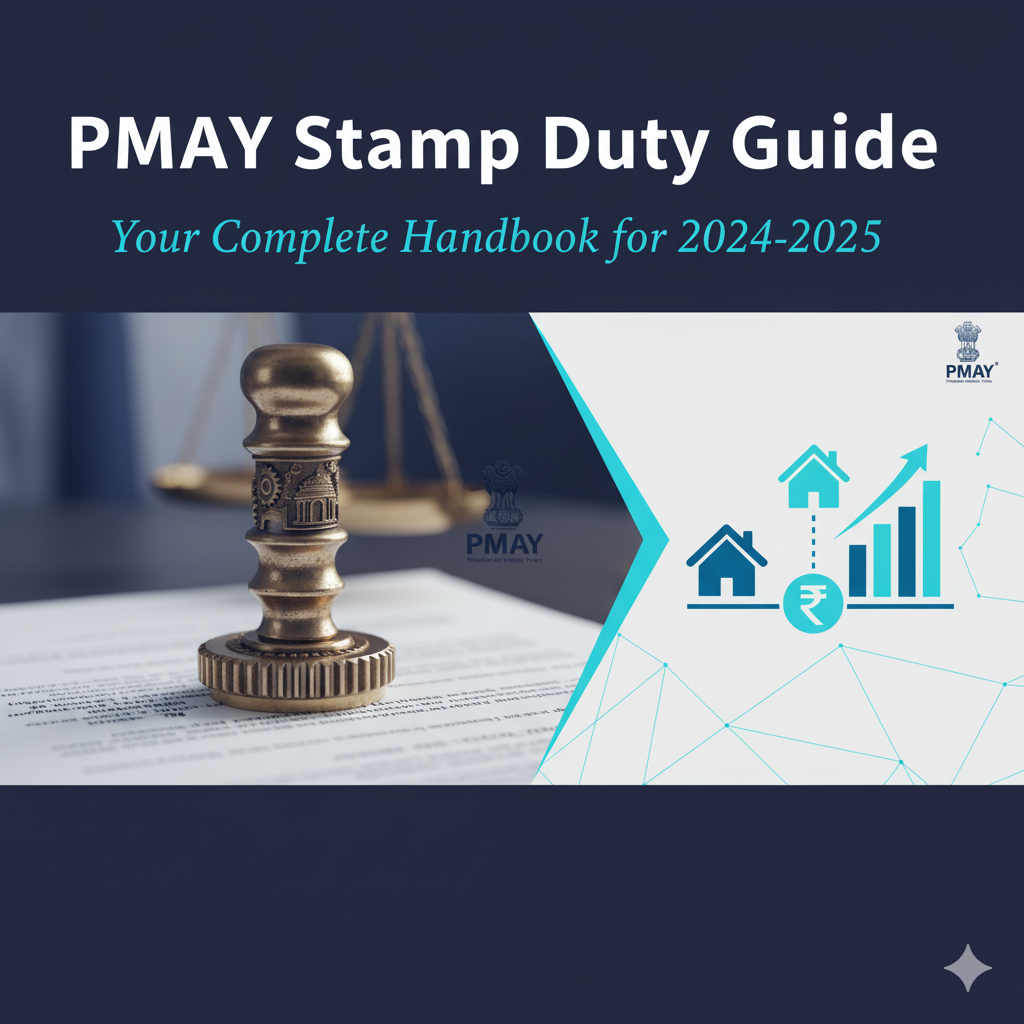
What is your reaction?
Excited
0
Happy
0
In Love
0
Not Sure
0
Silly
0

